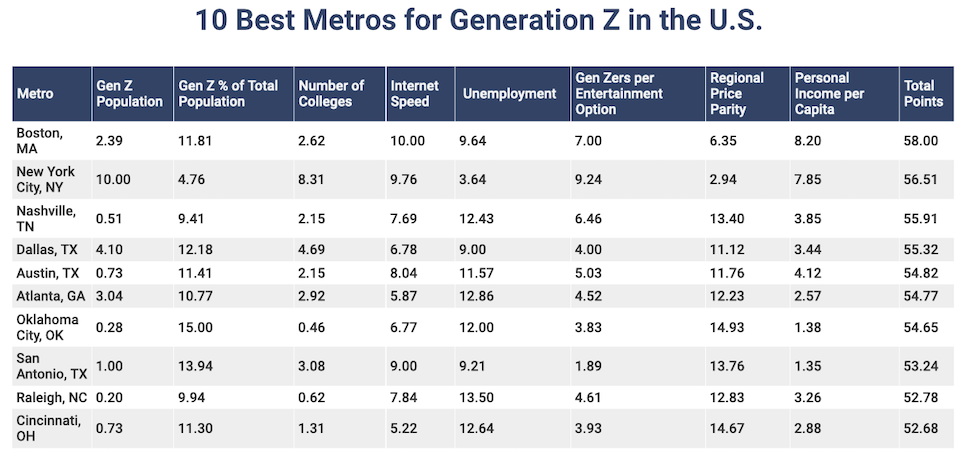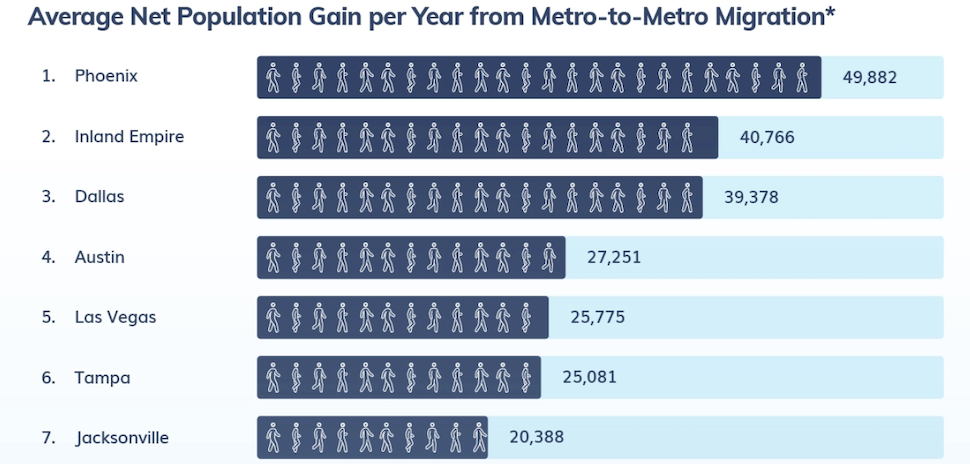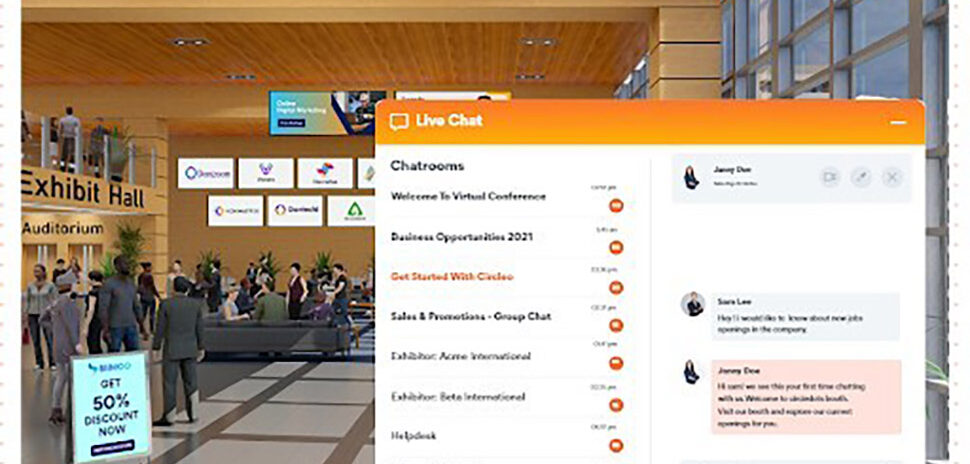Dallas-Fort Worth ranks No. 3 in the U.S. in metro-to-metro migration, according to a new CommercialCafe analysis.
The analysis is based on census data for yearly migration averages from 2015 to 2019. Dallas averaged 39,378 new residents per year, behind only Phoenix (No. 1 with 49,882) and L.A.-San Diego-Bakersfield (No 2. with 40,766).
Austin came in No. 4 with 27,251 new residents per year.
Houston had been ranked No. 3 in CommercialCafe’s previous listing, but it’s now fallen outside of the Top 10.
Out-of-state metros were biggest source of DFW’s population inflow
CommercialCafe says people moving from out-of-state metros (like L.A., NYC, San Francisco and Washington D.C.) were the biggest source of DFW’s population inflow. And it notes that DFW is one of the best metros for Gen Zers, too, coming in at No. 4 on that list from July.

[Image: CommercialCafe]
Top 3 metro inflows to Dallas-Fort Worth
On average, 17,266 people moved from Houston to Dallas-Fort Worth each year between 2015 and 2019. 10,312 moved here from Los Angeles, and 8,854 from Austin.
However, slightly more people moved from DFW to Houston and Austin than vice versa in those years.
So the real spotlight in this analysis is Southern Californians moving to Dallas-Fort Worth. Los Angeles metro has been the leading out-of-state source of migration to DFW.
DFW’s business climate and job opportunities are big draws
The CommercialCafe analysis cited several reasons why people are migrating to Dallas-Fort Worth. First, we have a business climate that’s attractive to both startups and large corporations. We also have healthy employment opportunities in a range of sectors including tech, healthcare, energy, and manufacturing.
Gen Zers like Dallas-Fort Worth, too
DFW’s relatively young population and stellar lineup of universities and colleges are big draws for Generation Z, the migration analysis notes. In July, CommercialCafe released its list of 10 Best Metros for Generation Z in the U.S. Dallas-Fort Worth came in No. 4 behind Boston, New York City, and Nashville.
Austin trailed Dallas on the Gen Z list too, coming in at No. 5. San Antonio placed No. 8. Houston didn’t make that list either.

[Image: CommercialCafe]
Migration analysis methodology
CommercialCafe calculated yearly net population gain by deducting the number of residents lost to other metros between 2015 and 2019 from the number of residents gained from other metros in the same time period.
The analysis is based on U.S. Census Bureau data released in September 2021. Non-internal migration was excluded from the analysis, as was migration to or from places that aren’t part of a metro area.
![]()
Get on the list.
Dallas Innovates, every day.
Sign up to keep your eye on what’s new and next in Dallas-Fort Worth, every day.































